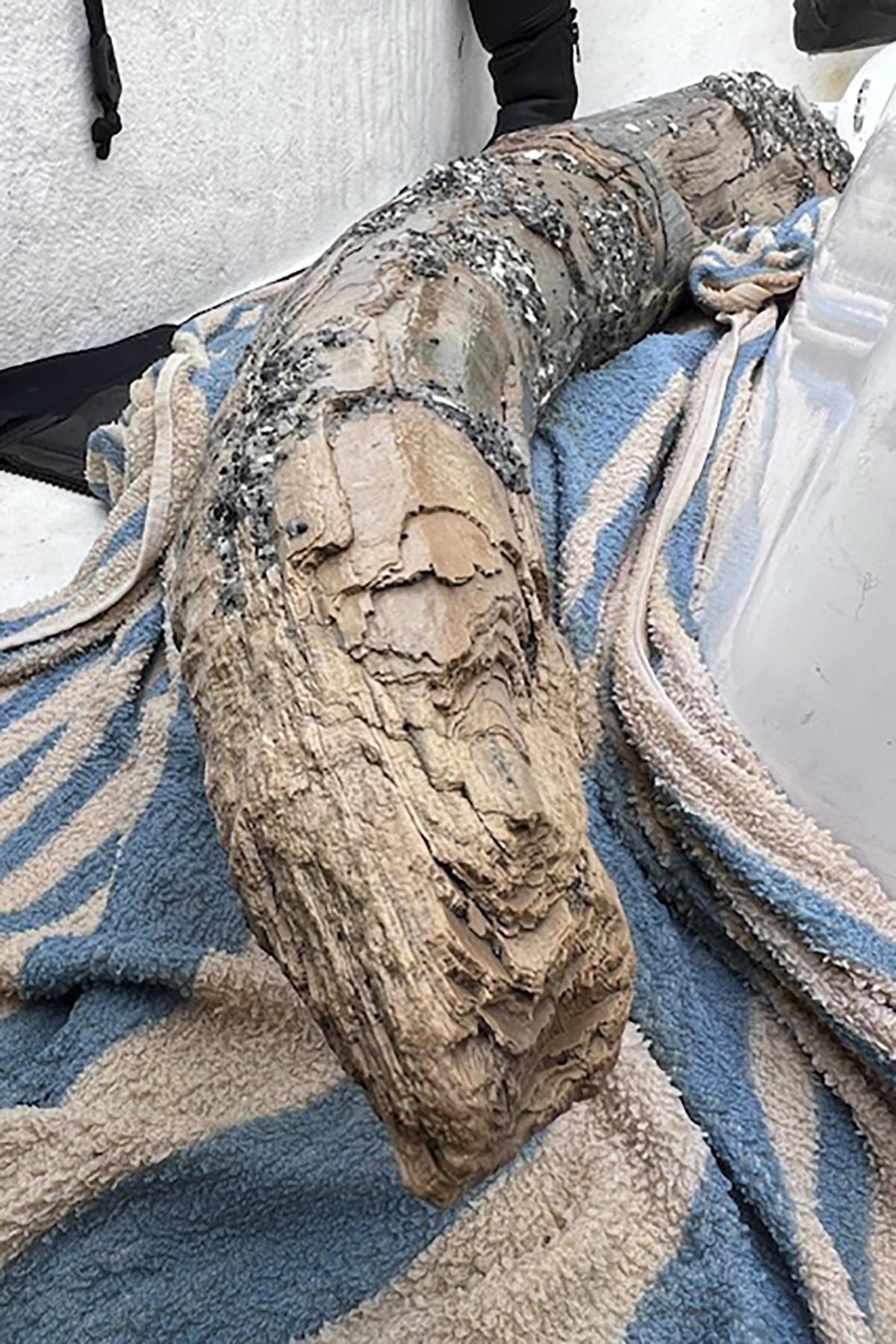
A diver off Florida’s Gulf Coast made a remarkable discovery when he stumbled upon a large section of tusk that turned out to be from a long-extinct mastodon. Alex Lundberg, the fossil-hunting diver, initially mistook the object for a piece of wood but soon realized its true significance.
The tusk, measuring about 4 feet and weighing 70 pounds, was found at a depth of 25 feet near Venice, Florida. Lundberg, along with his diving companion, has previously discovered mammoth teeth, bones of an ancient jaguar, and parts of a dire wolf in the same area. However, finding a large and intact mastodon tusk was a first for them.
Mastodons, related to mammoths and modern-day elephants, roamed North America millions of years ago. They went extinct about 10,000 years ago due to changing climates and hunting by early humans. The remains of mastodons are frequently found across the continent, with Indiana even designating the mastodon as its official state fossil.
Under Florida law, fossils of vertebrates found on state lands belong to the state, but Lundberg, who holds a permit to collect fossils, is hopeful he’ll be able to keep the tusk. The Florida Museum of Natural History will review the significance of the discovery to determine if they want to retain the fossil.
While the exact age of the tusk is yet to be determined, Lundberg, a marine biology graduate, considers the find a cool piece that has been rolling around in the ocean for millions of years. The tusk currently sits in a glass case in his living room, but its journey may not end there as scientists further study this rare and significant find.


